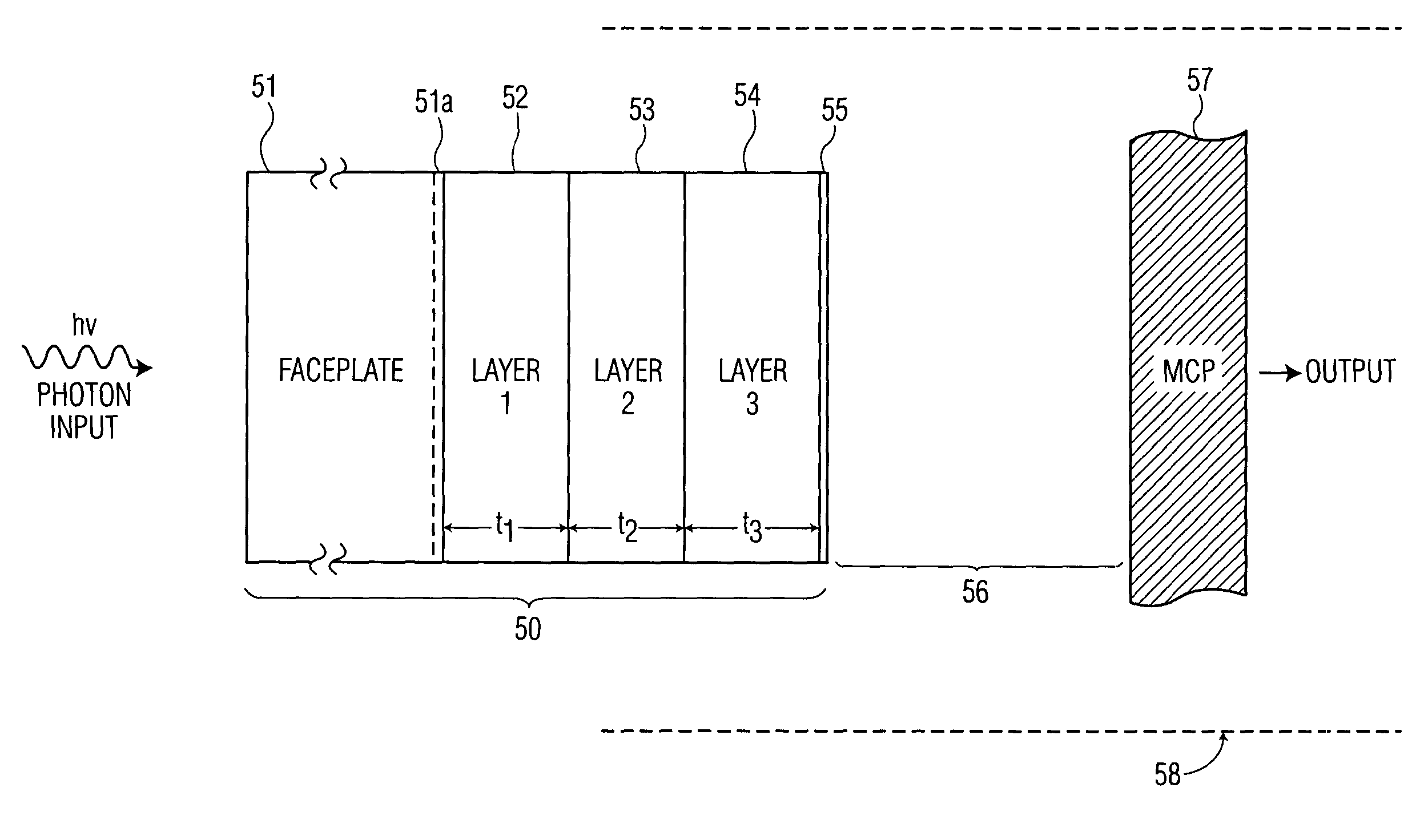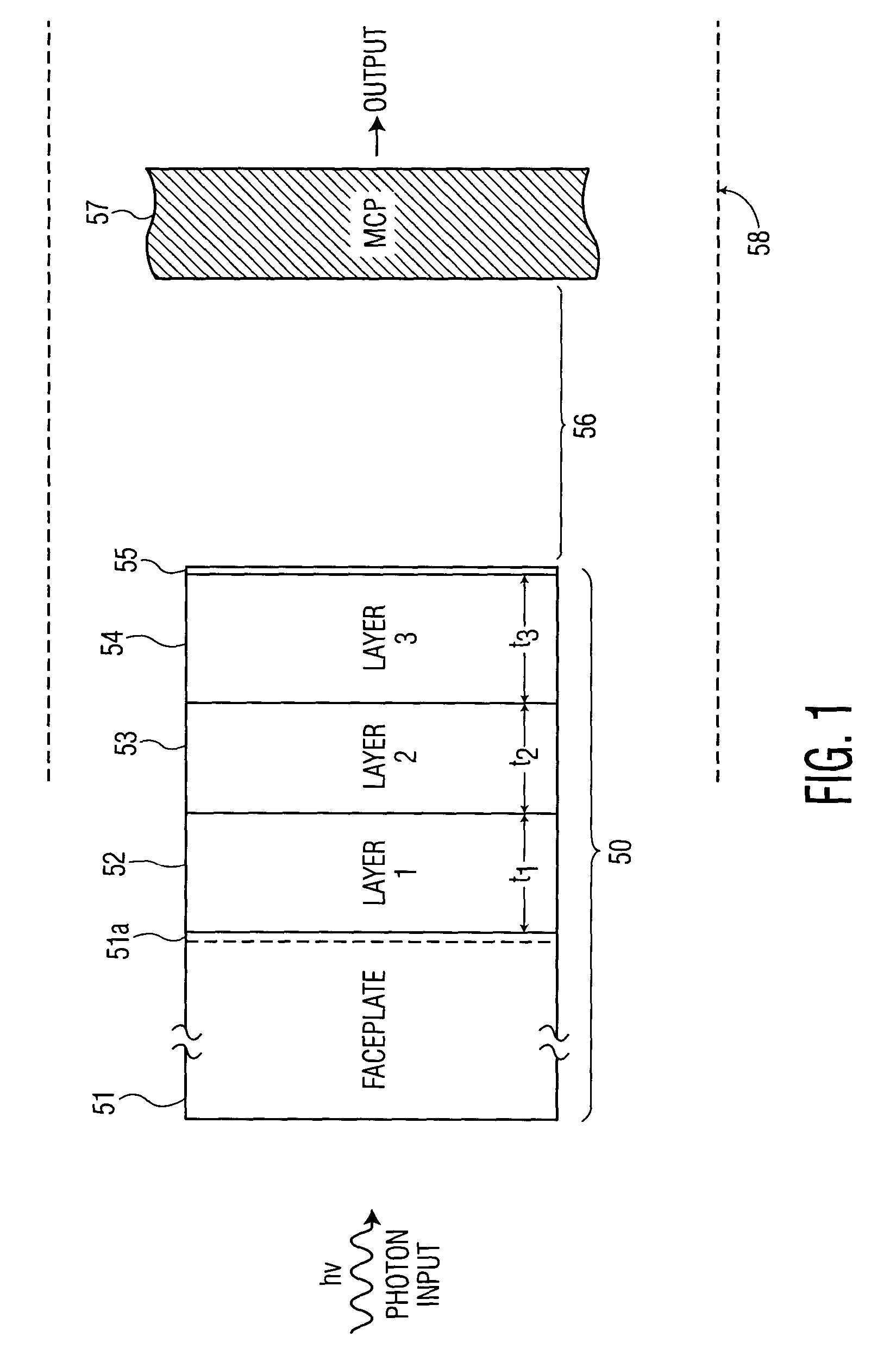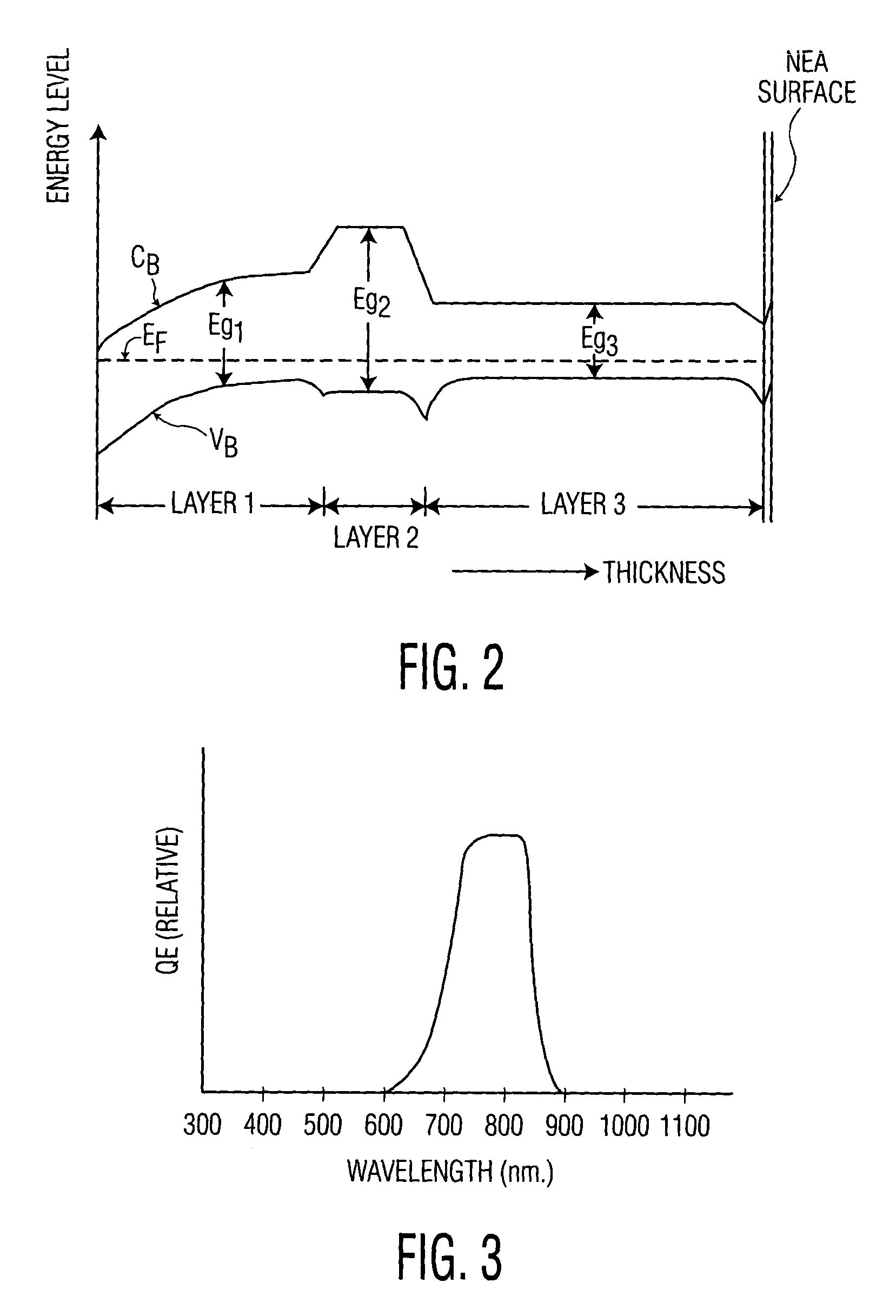Tuned bandwidth photocathode for transmission negative electron affinity devices
a negative electron affinity and transmission cathode technology, applied in the direction of radiation control devices, tubes with screens, image-conversion/image-amplification tubes, etc., can solve the problems of reducing the diffusion lifetime of photo excited electrons and drastically reducing the photo sensitivity (photo response)
- Summary
- Abstract
- Description
- Claims
- Application Information
AI Technical Summary
Problems solved by technology
Method used
Image
Examples
Embodiment Construction
[0031]As will be explained, the present invention provides a transmission NEA photocathode that has a tuneable photosensitivity, or a tuneable spectral-response characteristic. The spectral bandwidth and the spectral center wavelength may be tuned to desired values over a broad range. The invention provides short and long wavelength cutoffs, which may be tuned, without the need for external filtering optics.
[0032]Referring to FIG. 1, there is shown a cross section of a NEA transmission photocathode, generally designated as 50, in accordance with an embodiment of the invention. As shown, photocathode 50 includes faceplate 51, layer 1 (52), layer 2 (53), layer 3 (54) and NEA layer55. Photocathode 50 is inserted into vacuum housing 58, which may be similar to the manner in which photocathode 12 is inserted into vacuum housing 22 of FIG. 6. Microchannel plate 57 is also shown inserted into vacuum housing 58, in a manner similar to that of microchannel plate 24 shown inserted into vacuum...
PUM
 Login to View More
Login to View More Abstract
Description
Claims
Application Information
 Login to View More
Login to View More - R&D
- Intellectual Property
- Life Sciences
- Materials
- Tech Scout
- Unparalleled Data Quality
- Higher Quality Content
- 60% Fewer Hallucinations
Browse by: Latest US Patents, China's latest patents, Technical Efficacy Thesaurus, Application Domain, Technology Topic, Popular Technical Reports.
© 2025 PatSnap. All rights reserved.Legal|Privacy policy|Modern Slavery Act Transparency Statement|Sitemap|About US| Contact US: help@patsnap.com



